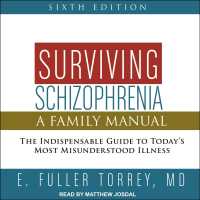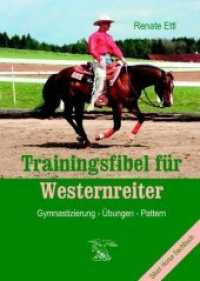- ホーム
- > 洋書
- > 英文書
- > Science / Mathematics
Full Description
Integrated circuits were developed following Moore's law. Moore's law predicts that the degree of microprocessor integration would double every 18 months in DRAM. However, as the size of circuit elements approaches its physical limit, the optical method used in manufacturing 16 nm-node chips is also approaching a limit. Although the scaling of microelectronic circuit elements still follows Moore's law, the unit density of power consumption will become unacceptable. Therefore, on the one hand, people continuously develop the microelectronic technology, and on the other, they consider the developing road after Moore's law is broken, i.e., more Moore's law or more-than Moore's law.
Physically, when the scale of a circuit element decreases to 10 nm or even less, the quantum effect will appear and play a more and more important role. The electron transport becomes non-classical and non-linear, and even the electron motion likes the waveguide motion. This book introduces some theories and experiments of quantum transport and consists of two parts: (1) Non-Classical and Non-Linear Transport and (2) Quantum Waveguide Theory. It provides some foundations of semiconductor micro- and nanoelectronics for the after-Moore age. The two new chapters in this edition present investigations on (1) mesoscopic transport and (2) Rashba electron's spin transport in a straight waveguide with a stub that has a smooth boundary.
Contents
Introduction Part I Non-Classical Non-Linear Transport 1. Properties of Quantum Transport 2. Non-equilibrium Transport 3. Reasonant Tunneling 4. Longitudinal Transport of Superlattices 5. Mesoscopic Transport 6. Transport in Quantum Dots 7. Silicon Single-Electron Transitor 8. Silicon Single-Electron Memory Part II Quantum Waveguide Theory in Mesoscopic Systems 9. Properties of Quantum Transport 10. One Dimensional Quantum Waveguide Theory 11. Two-Dimensional Quantum Waveguide Theory 12. One-Dimensional Quantum Waveguide Theory of a Rashba Electron 13. 1D Quantum Waveguide Theory of Rashba Electrons in Curved Circuits 14. Spin Polarization of a Rashba Electron with a Mixed State 15. Two-Dimensional Quantum Waveguide Theory of Rashba Electrons 16. Conductance of Rashba Electron in a Quantum Waveguide with Smooth Boundary 17. Spin Flip in a Quantum Ring






